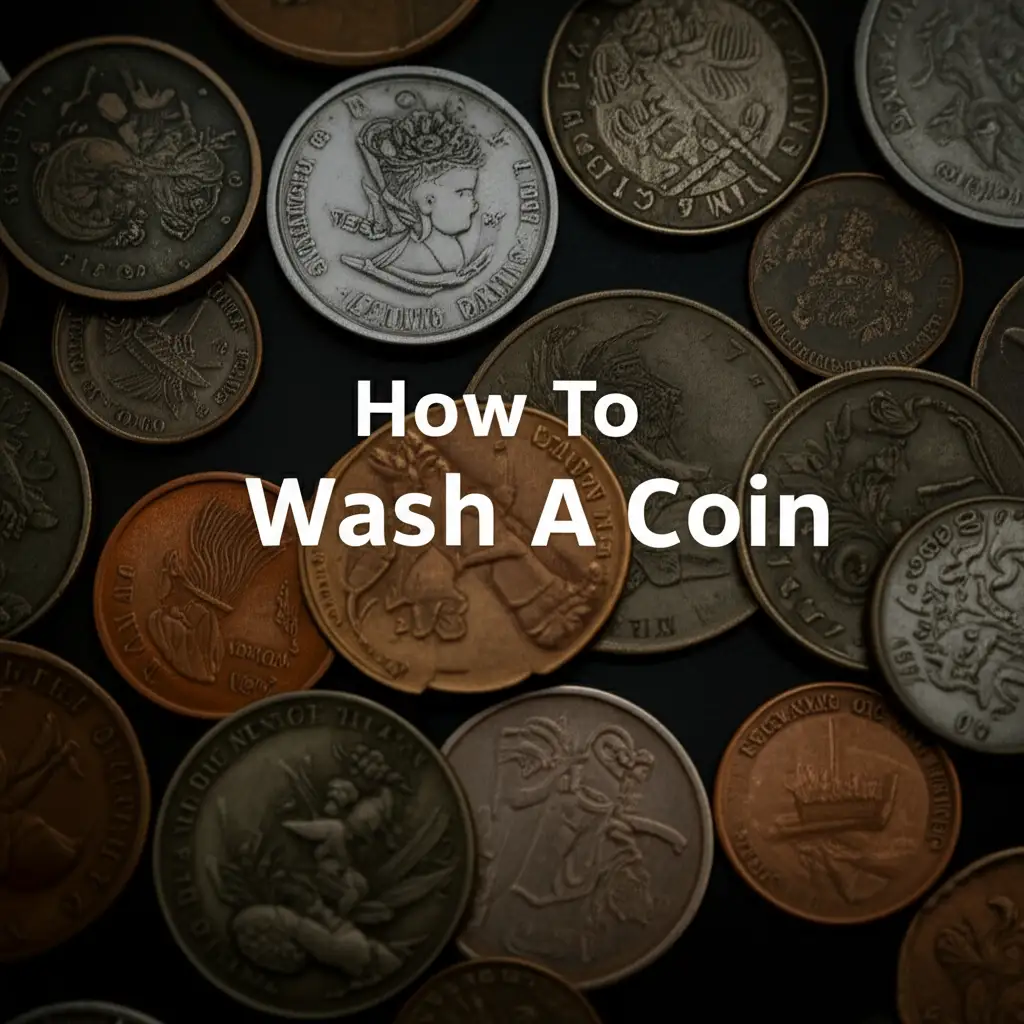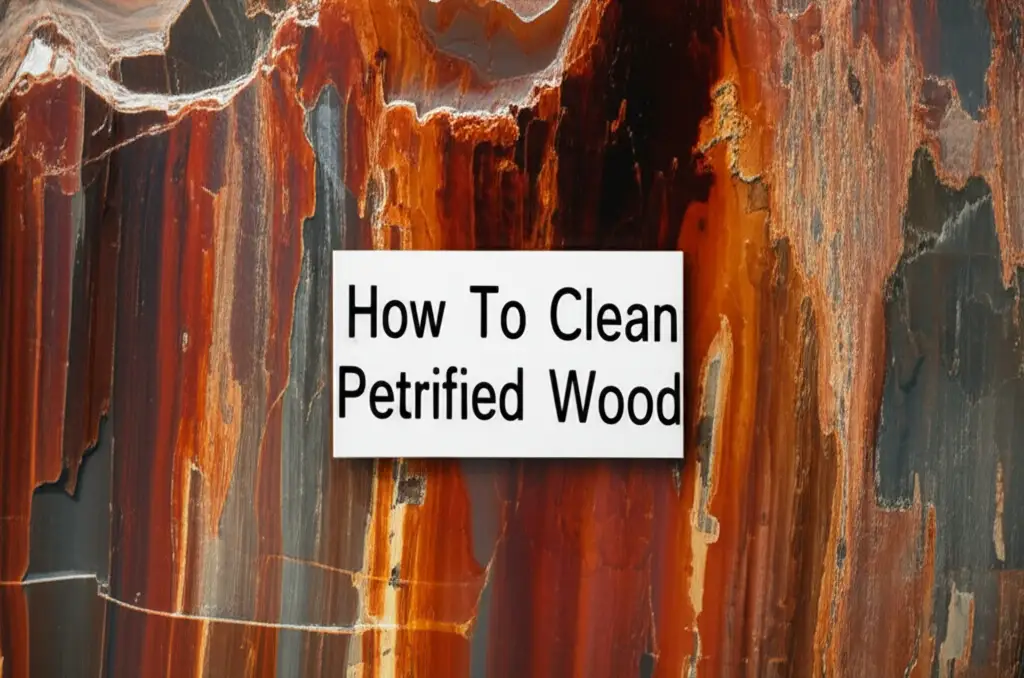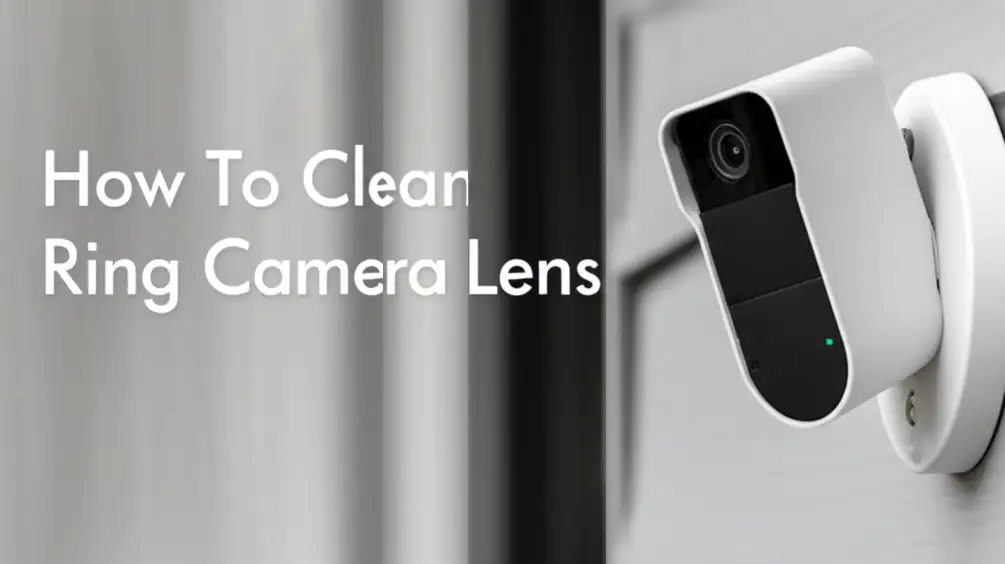· Cleaning Guides · 16 min read
How To Wash A Coin

Mastering Coin Cleaning: How To Wash A Coin Safely
Have you ever found a dirty coin? Perhaps it was in an old purse, under a couch cushion, or uncovered in your garden. We all come across coins that look a bit grimy. The question “how to wash a coin” often comes up. Cleaning these small pieces of history can make them look better. It can also remove germs.
This guide helps you understand the best ways to wash coins without causing harm. We cover basic steps for safe cleaning. We also look at different coin materials. You will learn about common mistakes to avoid. This article also provides tips on when it is best not to wash a coin, especially if it holds value. Let us get your coins sparkling clean the right way.
Takeaway
- Always use the gentlest method: mild soap and distilled water.
- Identify the coin’s metal type before cleaning to avoid damage.
- Avoid harsh chemicals, abrasive tools, and vigorous scrubbing.
- Do not clean valuable or collectible coins; consult an expert instead.
- Dry coins completely and store them properly to maintain cleanliness.
Your Quick Answer to Coin Cleaning
To wash a coin, gently rinse it with distilled water, then soak it briefly in a solution of mild dish soap and distilled water. Gently rub the coin with your fingers or a soft cloth. Rinse thoroughly with clean distilled water and pat dry with a soft, lint-free cloth.
Understanding Coin Composition: Why It Matters When You Wash A Coin
When you decide to wash a coin, knowing what it is made of is very important. Coins are not all the same. They come from different metals. Each metal reacts differently to cleaning agents. If you use the wrong method, you can damage the coin.
Most modern coins are made from alloys. An alloy is a mix of metals. For example, many pennies are copper-plated zinc. Nickels are copper and nickel. Dimes and quarters are copper and nickel too, but with outer layers of pure copper and nickel. Older coins might be pure copper, silver, or even gold.
Copper coins can tarnish easily. They develop a dark layer over time. This layer is called patina. Some people value this patina. Cleaning copper too harshly can remove this layer. It can also leave bright pink marks, which looks bad. Silver coins also tarnish. They get a black or gray layer of silver sulfide. Gold coins are very stable. They resist tarnish well. Nickel coins are also quite resistant.
If you clean a coin without knowing its metal, you risk damage. Strong acids can eat away at copper and zinc. Abrasive scrubbers can scratch any metal surface. These scratches remove small bits of metal. This makes the coin look worn. It also reduces its smoothness. Always identify your coin’s material first. This step protects your coin. It ensures you use the correct cleaning method. Just as you would carefully clean other items made of specific materials, like when you clean natural stone, coins also need tailored care. Knowing the material helps you choose the safest approach. How to wash a molcajete for instance, teaches you about caring for a different kind of porous, natural material. This same thoughtful approach applies to various coin materials.
Basic Principles of Safe Coin Washing
Cleaning a coin should always follow some simple rules. These rules help you avoid damaging your coin. The main idea is to be gentle. You want to remove only dirt and grime. You do not want to strip away the coin’s surface or value.
First, always use the gentlest method possible. This usually means plain water. Distilled water is best. Tap water has minerals. These minerals can leave spots on your coin. Warm water can help loosen dirt. Do not use very hot water. Hot water can sometimes react with coin metals.
Second, avoid harsh chemicals. Many household cleaners are too strong for coins. Substances like bleach, vinegar, or lemon juice are acidic. They can etch the metal. They can also remove desirable patina. Baking soda is abrasive. It can scratch the coin’s surface. These products might make the coin look shiny for a moment. But they cause permanent damage. They strip away the coin’s natural finish. This damage cannot be undone.
Third, never use abrasive tools. Steel wool, wire brushes, or even a hard toothbrush can scratch a coin. These scratches are permanent. They lower the coin’s appearance. They also reduce its collectible value. Use only soft tools. Your fingers are often the best tool. A soft cotton cloth or a soft artist’s brush can also work.
Your goal is to clean the surface. You are not trying to make an old coin look brand new. A coin that looks too shiny often means it was cleaned improperly. A properly cleaned coin will look clean but still show its age. It will keep its natural luster, not a harsh shine. Remember these principles. They guide you toward safe and effective coin cleaning.
Step-by-Step Guide: How To Wash A Coin With Mild Soap and Water
Washing a coin with mild soap and water is the safest method for most common coins. This process helps remove surface dirt and oils. It does so without harming the metal. Here is how you can do it carefully.
Preparing Your Workspace
First, gather your materials. You will need a small bowl or container. Choose one that you do not use for food. You also need distilled water. This prevents mineral spots. A mild dish soap works well. Make sure it has no strong chemicals or scents. Look for a soap designed for hand washing dishes. A soft, lint-free cloth is essential for drying. Cotton or microfiber cloths are good choices. Some people like to use soft cotton swabs or a very soft artist’s brush for tricky spots. Place a towel on your work surface. This prevents coins from rolling away. It also protects the surface from water.
The Gentle Washing Process
Start by rinsing your coin under a slow stream of distilled water. This removes loose dirt. Do not rub the coin yet. Just let the water flow over it. Next, fill your bowl with distilled water. Add a tiny drop of mild dish soap. Mix it gently. Place your coin into this soapy water. Let it soak for a few minutes. For very dirty coins, you can soak them longer, up to an hour. The soak helps loosen stuck-on grime. After soaking, take the coin out. Gently rub the coin between your thumb and forefinger. Use only light pressure. You will feel the dirt coming off. If dirt remains in crevices, you can use a soft cotton swab or an artist’s brush. Work very gently. Do not scrub hard. The goal is to lift the dirt, not scrape it off. If a spot does not come clean easily, do not force it.
Rinsing and Drying Your Coins
Rinsing is a critical step. Soap residue can harm your coin over time. It can also leave unsightly spots. Rinse the coin thoroughly under a slow stream of fresh distilled water. Make sure all soap is gone. Turn the coin over multiple times to rinse both sides. Inspect the coin closely. Look for any remaining soap suds. Once clean, place the coin on your soft, lint-free cloth. Gently pat it dry. Do not rub hard. Rubbing can scratch the surface. It can also create an unwanted shine. You can also let the coin air dry completely on the cloth. Make sure it is fully dry before storing it. Any moisture can lead to new tarnish or water spots. This simple process can make a big difference for your everyday coins.
Advanced Considerations for Cleaning Specific Coin Types
Different coin metals require slightly different handling. While the mild soap and water method is generally safe, understanding each metal’s properties helps avoid specific issues. This is especially true for older or foreign coins.
Caring for Copper Coins
Copper coins are common, especially pennies. They are very reactive to the environment. They often turn dark brown or even black due to oxidation. This dark layer is called patina. For collectible coins, this patina is often desirable. It shows the coin’s age and history. For common, dirty pennies, you might want to remove some grime. When you wash a copper coin, be extra gentle. Avoid any acidic cleaners. Acids will make copper bright pink. This “pink disease” is permanent. It makes the coin look unnatural. A quick dip in mild soapy water and a gentle rub is best. Rinse very well. Dry quickly and completely. Never let copper air dry slowly. Water spots can easily form. They create new ugly marks.
Addressing Silver Tarnish
Silver coins also tarnish. They develop a black film over time. This film is silver sulfide. It comes from sulfur in the air. For circulated silver coins, gentle washing with mild soap and distilled water can remove surface grime. However, it will not remove heavy tarnish. Commercial silver dips exist, but they are very risky. They can strip away all patina. They can leave the coin looking unnatural. They also remove a microscopic layer of metal. For valuable silver coins, never use these dips. For common silver items, like silverware, these dips might be okay. But coins are different. If you must reduce tarnish on a non-valuable silver coin, try a quick dip in the mild soap solution. Gently rub with a finger. Rinse and dry immediately. Remember, for valuable silver, leave the tarnish.
Washing Gold and Nickel Coins
Gold coins are very stable. Gold does not react with most chemicals. It does not tarnish. If a gold coin looks dirty, it is usually just surface grime. A simple wash with mild soap and distilled water is usually enough. Gold coins are also soft. Be careful not to scratch them. Avoid any abrasive materials. Nickel coins, like modern U.S. nickels, are also quite durable. They resist corrosion well. They do not tarnish much. Like gold coins, a mild soap and water wash is perfect for nickel. They are less likely to show water spots or react negatively. Still, use distilled water and dry them completely. This careful approach helps keep your coins looking their best. Just as you would carefully clean specific types of materials to maintain their integrity, coins too benefit from a tailored cleaning method based on their composition. Knowing the type of metal helps you choose the safest care.
Common Mistakes to Avoid When Washing Coins
When cleaning coins, many people make mistakes. These mistakes can cause permanent damage. They can reduce a coin’s appearance. They can also destroy its value. Understanding these errors helps you keep your coins safe.
One major mistake is using abrasive materials. People sometimes try to scrub dirt off with steel wool, sandpaper, or even a hard toothbrush. These tools scratch the metal. The scratches are small but permanent. They make the coin look worn. They remove the coin’s natural luster. Never use anything harder than your fingertip or a very soft cloth. Think about how delicate some items are. Cleaning something like a how to wash a loofah requires gentleness to avoid tearing or damaging the fibers. Coins need a similar level of care to protect their surfaces.
Another common error is using harsh chemicals. Many household cleaners contain strong acids or bases. Substances like vinegar, lemon juice, bleach, or oven cleaner are too aggressive. They can etch the coin’s surface. They can also cause discoloration. For copper coins, acids create a bright pink surface. This “pink disease” is a permanent sign of damage. For silver, strong chemicals can leave a dull, lifeless appearance. Even baking soda, when mixed with water, forms an abrasive paste. This paste can scratch the coin. Always stick to mild dish soap.
Mechanical cleaning methods are also risky. Coin tumblers or rotary tools seem convenient. They spin coins with abrasive media. This process removes dirt quickly. However, it also removes a thin layer of metal. It creates an unnatural, polished look. This look is known as “cleaned” in the coin collecting world. It greatly reduces a coin’s value. For collectors, a coin that has been mechanically cleaned is often worthless.
Finally, improper drying is a frequent mistake. Leaving coins to air dry slowly can lead to water spots. Tap water contains minerals. When water evaporates, these minerals remain. They leave white marks on the coin. Always pat coins dry immediately with a soft, lint-free cloth. Ensure they are completely dry before storing them. Even a tiny bit of moisture can cause new tarnish or corrosion. Avoiding these common errors ensures your coins remain in the best possible condition.
When Not to Wash Your Coins: Preserving Numismatic Value
While washing everyday coins for hygiene is fine, cleaning a valuable or collectible coin is almost always a bad idea. For these coins, cleaning can cause irreversible harm. It can destroy their numismatic value. Numismatic value refers to the worth of a coin to collectors.
Collectors prefer coins that are in their original state. They value the natural aging process. This includes the patina, which is the layer of tarnish that forms over time. Patina tells the coin’s story. It provides evidence of its age and authenticity. Cleaning removes this patina. It makes the coin look unnatural. A cleaned coin, even if it looks shiny, is usually worth much less to a collector than an uncleaned coin, even if it is dirty. The market for collectible coins sees “cleaning” as damage.
How do you know if a coin is valuable? First, check its date and mint mark. Older coins, especially those from the 1800s or early 1900s, might be valuable. Coins with low mintage numbers (fewer made) are often rare. Coins in very good condition are also more valuable. If you find an old or unusual coin, do not clean it. Seek expert advice instead. A coin dealer or a professional numismatist can evaluate your coin. They can tell you its history and its worth.
Professional conservation is different from cleaning. Conservators use special methods. They stabilize a coin. They might remove harmful deposits. They do not aim to make the coin shiny. They aim to stop further deterioration. They work to preserve the coin’s original surface. This work requires specialized training and equipment. It is not something you can do at home.
So, if you find a coin and think it might be special, just put it aside. Do not try to make it look better. “Do no harm” is the golden rule in coin collecting. A dirty but original coin is always better than a clean but damaged one. This caution applies to any item where original state matters, such as antique furniture or historical documents.
Maintaining Coin Cleanliness and Storage Tips
Once you have cleaned your coins, keeping them clean is the next step. Proper storage prevents new dirt and tarnish. It helps preserve their appearance for a long time. Coins are exposed to air, moisture, and oils from our skin. These elements can make coins dirty again.
After washing and thoroughly drying your coins, avoid touching them directly with bare hands. Our skin has oils and acids. These can transfer to the coin surface. They can cause new spots or accelerate tarnishing. Use soft cotton gloves when handling coins. This simple habit keeps your coins pristine.
Proper storage is crucial for maintaining cleanliness. Do not store coins in old paper envelopes. Many papers contain sulfur or other chemicals. These chemicals can react with coin metals, especially silver and copper. This causes new tarnish. Avoid plastic bags that are not “coin safe.” Some plastics, like PVC (polyvinyl chloride), can break down over time. They release chemicals that can damage coins. This damage appears as a green sticky film.
Instead, use materials designed for coin storage.
- Coin Flips: These are small, clear plastic holders. Buy ones marked “PVC-free” or “archival safe.” They protect the coin from touch and air.
- Slabs: These are hard, sealed plastic cases. Professional grading companies use them. They offer the best protection. They fully enclose the coin.
- Coin Albums: These binders have special pages with individual coin slots. Make sure the pages are made from safe, inert plastic.
- Coin Tubes: These are cylindrical plastic tubes. They hold many coins of the same size. They are good for storing rolls of uncirculated coins.
Store your coins in a cool, dry place. Avoid areas with high humidity, like basements or attics. Humidity speeds up corrosion and tarnishing. Keep them away from direct sunlight. Sunlight can cause some plastics to break down. Good air circulation is also helpful. Following these storage tips will keep your washed coins looking great for years. It protects them from environmental damage.
FAQ Section
Q1: Can I use vinegar to clean coins?
Using vinegar to clean coins is generally not recommended. Vinegar is acidic. It can strip away a coin’s natural patina and dull its surface. For copper coins, vinegar can cause a permanent pink discoloration. It is best to stick to mild soap and distilled water to avoid damage.
Q2: How often should I wash my coins?
You should wash coins only when necessary. If a coin is very dirty from handling or environment, a gentle wash can be helpful for hygiene. However, frequent washing is not needed. For collectible coins, it is almost always better to leave them uncleaned.
Q3: Does washing a coin reduce its value?
For collectible coins, washing almost always reduces their numismatic value. Collectors prefer coins in their original state, including natural tarnish. Cleaning can leave scratches or an unnatural appearance, which experts see as damage. For common, non-collectible coins, washing does not affect their monetary value.
Q4: What’s the best way to dry coins?
The best way to dry coins is to gently pat them with a soft, lint-free cloth. Cotton or microfiber cloths work well. Ensure the coin is completely dry before storing it. Avoid rubbing the coin vigorously. Air drying is also an option, but immediately after rinsing to prevent water spots.
Q5: Can I clean very old or valuable coins?
No, you should not clean very old or valuable coins yourself. Cleaning can destroy their historical and numismatic value. If you find what you believe is a valuable coin, consult a professional coin dealer or a numismatist. They can evaluate and advise on proper preservation methods.
Conclusion
Learning how to wash a coin properly can help keep your everyday money clean and presentable. We have explored the safest ways to clean coins. We emphasized the importance of knowing your coin’s metal type. This knowledge helps you choose the right gentle cleaning method. You learned to use mild soap and distilled water. You also discovered why it is important to avoid harsh chemicals and abrasive tools.
Remember, the goal is always to remove dirt, not to make a coin look new. We discussed common mistakes like improper drying or using strong acids. We highlighted the crucial fact that cleaning valuable or collectible coins almost always lowers their worth. For these special coins, doing nothing is often the best choice. Finally, proper storage is key to keeping coins clean after they are washed. By following these guidelines, you can ensure your coins remain in good condition. You can keep them clean without causing harm. Start applying these simple, effective tips to safely wash your coins today.
- coin cleaning
- coin care
- money hygiene




